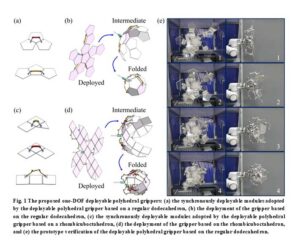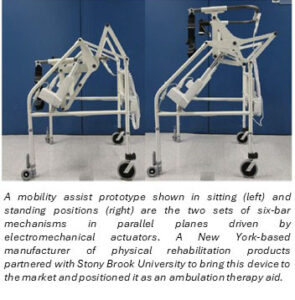
Structural Designs of Novel Deployable Polyhedral Grippers for Noncontact Capturing Missions
Authors: Ruijie Tang, Qizhi Meng, Fugui Xie, Xin-Jun Liu, and

Authors: Ruijie Tang, Qizhi Meng, Fugui Xie, Xin-Jun Liu, and

Authors: Debrina Roy, Nicole Calpin, Kathy Cheng, Alison Olechowski, Andrea
Robotic manipulators capable of generating a Remote Center of Motion

Authors: Mauricio Arredondo-Soto, Enrique Cuan-Urquizo, Alfonso Gómez-Espinosa, Armando Roman-Flores, and

Authors; Zhijie Lyu and Anurag Purwar This paper presents
The JMD Webinar is a series of webinars organized quarterly
In today’s rapidly evolving world, data plays a pivotal role

Authors: Cole Jetton, Matthew Campbell, Christopher Hoyle Abstract This paper

Authors: Honglin Li and Jie Zhang Abstract This article presents

Authors: Kristen M. Edwards, Binyang Song, Jaron Porciello, Mark Engelbert,

© 2021 Copyright Journal of Mechanical Design. All Rights Reserved. Privacy Policy